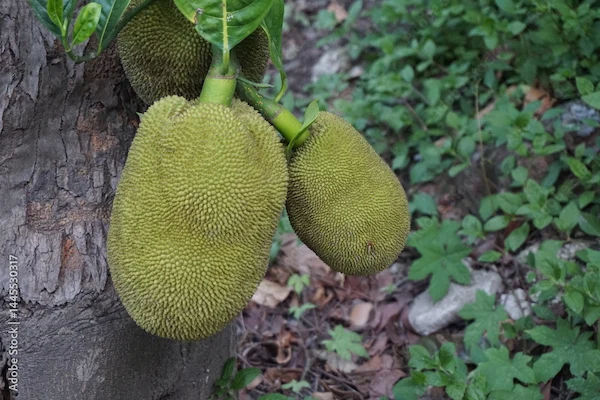Lauki (Bottle Gourd) Juice: Ayurvedic Uses and Health Benefits
Discover lauki juice benefits as a gentle ayurvedic juice and hydrating detox drink. Learn the science, safety tips, recipes, and who should avoid it.

%20Juice%20Ayurvedic%20Uses%20and%20Health%20Benefits.webp?tr=q-80,f-webp,w-350,dpr-2,c-at_max 700w)
Introduction: Why Lauki Juice Is Getting Attention
If you’re curious about lauki juice benefits, you’re not alone. Bottle gourd (also called lauki, doodhi, or calabash) is a water-rich vegetable long used in Indian kitchens and Ayurvedic practice. Many people blend it as a light, refreshing drink—sometimes even calling it a “detox drink” or an Ayurvedic juice—hoping it supports digestion, hydration, and overall wellness.
Here’s a clear, evidence-informed guide to what lauki juice can (and cannot) do, how to make it safely, who should be cautious, and how to enjoy it as part of a healthy lifestyle.Consult a Top Ayurveda Doctor for Personalised Advice
What Is Lauki (Bottle Gourd)?
• Common names: Lauki, doodhi, calabash, bottle gourd (Lagenaria siceraria)
• Taste and texture: Mild, slightly sweet when fresh; high water content with a soft, spongy flesh
• Culinary use: Cooked in curries, soups, stews; occasionally juiced fresh with herbs like mint or ginger
Key point: Because lauki is so water-dense and naturally low in calories, it can fit easily into many balanced diets when prepared safely.
Is Lauki Juice a “Detox Drink”?
Let’s clear this up first. Your liver, kidneys, lungs, skin, and gut already detoxify your body naturally. No drink can replace those organs.
That said, staying well-hydrated and eating plenty of vegetables can support your body’s normal functions. Lauki juice, being mostly water and low in calories, may help with:
• Hydration: Fluids help your kidneys filter waste and keep you energised.
• Vegetable intake: It’s one way to add a mild-tasting vegetable to your day.
Bottom line: Calling lauki juice a detox drink is more about healthy hydration and veggie intake than any special “cleanse.” If you see extreme claims, be cautious.
Quick Look: Potential Lauki Juice Benefits
• Hydration support: Lauki is primarily water, which helps maintain fluid balance.
• Low-calorie, light option: Can be a gentle addition if you’re watching calorie intake.
• Nutrient contribution: Provides small amounts of vitamins/minerals (varies by source and preparation).
• Easy to digest for many people: The cooked vegetable is generally gentle; juiced lauki is mild for many, though not for everyone.
Important: Always taste a tiny piece before juicing. If it’s bitter, spit it out and discard the gourd. Bitter lauki can be unsafe (more on this below).
How Ayurveda Views Lauki (The “Ayurvedic Juice” Perspective)
In traditional Ayurveda, bottle gourd is often described as:
• Cooling and light: Used to balance excess heat, especially during warm seasons.
• Gentle on digestion: Common in simple, home-style meals when the stomach needs something soothing.
• Paired with herbs: Mint, ginger, cumin, or black pepper may be added to support taste and digestion.
Modern evidence does not fully test or verify Ayurvedic uses of lauki juice. Think of these as traditional practices rather than proven medical treatments. If you’re under medical care, ask your clinician before adding any herbal or traditional preparation.
What Science Can Say Right Now
While research specifically on lauki juice is limited, several well-established health principles can apply to vegetable juices and hydration in general:
• Hydration supports normal kidney function: Drinking enough fluid helps your body regulate temperature and eliminate waste.
• Vegetables contribute fibre, vitamins, and minerals: Whole vegetables (and some juices) can add nutrients to your diet; however, juicing can reduce fibre compared with eating the whole vegetable.
• Potassium from vegetables supports normal blood pressure: Many vegetables provide potassium, which can help counter sodium’s effect on blood pressure. (Note: People with kidney disease may need to limit potassium—see safety section.)
Caution: Bitter Lauki Can Be Dangerous
This is the most important safety message. Bottle gourd belongs to the cucurbit family (like some gourds and cucumbers). Rarely, a lauki can accumulate high levels of natural compounds called cucurbitacins, making it very bitter and potentially toxic. Drinking bitter bottle gourd juice has been associated with severe stomach pain, vomiting, diarrhoea, and, in rare cases, serious complications.
Safety rules:
• Always taste-test first: Cut a small piece of raw lauki and taste it lightly. If there is any bitterness, do not cook or juice it—discard it immediately.
• Do not “mask” bitterness: Mixing with other juices, sugar, or spices does not make it safe.
• Start small: Even with a fresh, non-bitter lauki, begin with a small serving (about 100–150 ml) to see how you feel.
• Seek urgent care if unwell: If you develop severe abdominal pain, repeated vomiting, or bloody stools after consuming lauki, get medical help immediately.
Who Should Be Cautious or Avoid Lauki Juice
• Kidney disease or potassium-restricted diets
• Digestive disorders such as IBS or a sensitive gut
• People with diabetes
• Pregnant or breastfeeding women
• Children (better to offer cooked lauki)
How to Choose a Safe, Good Lauki
• Look for: Firm, pale green skin; no soft spots or cracks; a lightweight, tender feel
• Avoid: Overly mature, very large, or yellowing gourds; any signs of damage or decay
• Taste-test before use: A tiny raw nibble must taste mild—not bitter
Hygiene and Preparation Tips (Important for Any Fresh Juice)
• Wash hands, cutting board, and knife before preparation.
• Rinse the lauki under running water and scrub lightly to remove dirt.
• Peel the skin and remove any large seeds if present.
• Use clean equipment (juicer/blender) and drink soon after preparing.
• Refrigerate promptly and consume within 24 hours if stored.
How to Make Lauki Juice (Simple, Safe Method)
Basic Recipe (1 Serving)
Ingredients:
• 1 small, fresh lauki (about 250–300 g), peeled
• A few mint leaves or 1–2 cm fresh ginger (optional)
• 1–2 teaspoons lemon or lime juice (optional)
• A pinch of black salt or roasted cumin (optional)
• Cold water as needed
Steps:
1. Taste-test a small piece. If there is any bitterness, throw it away.
2. If mild, chop the lauki and blend with a little cold water until smooth.
3. Strain if you prefer a lighter texture, or keep pulp for more fibre.
4. Add lemon/lime, mint/ginger, and a pinch of roasted cumin or black salt if you like.
5. Serve immediately. Start with 100–150 ml to check tolerance.
Flavour Ideas
• Classic cooling: Lauki + mint + lime + roasted cumin
• Ginger-fresh: Lauki + ginger + lemon + a pinch of black pepper
• Savoury sip: Lauki + cilantro + a dash of rock salt + cumin
How Much and How Often?
• Reasonable portion: 100–200 ml on days you choose to drink it.
• Frequency: A few times per week is plenty for most people; daily is optional, not required.
• Timing: Morning is popular, but there’s no special “detox window.” Choose a time that fits your routine.
Lauki Juice vs Eating Whole Lauki
• Juice: Hydrating and easy to sip; may be gentler on days you want something light. But juicing may remove much of the fibre unless you keep the pulp.
• Whole/cooked lauki: Offers fibre and satiety, supports digestion, and works well in soups, dals, and stews.
Tip: If you prefer juice, blend and keep some pulp for extra fibre. Consider alternating between juice and cooked lauki to get the best of both worlds.
How Lauki Juice Can Fit into a Balanced Lifestyle?
• Pair with a meal: Combine with protein (dal, yoghurt, eggs) and whole grains to keep blood sugar steady and feel full.
• Keep portions modest: Juices can add up quickly; small servings are enough.
• Don’t rely on any single food: Variety across fruits, vegetables, proteins, and whole grains is key.
Common Myths and What to Know
• “Lauki juice melts belly fat.” — No single food targets belly fat.
• “Drinking lauki juice detoxes your body.” — Your organs handle detox naturally.
• “If lauki tastes bitter, adding other ingredients makes it safe.” — Never consume bitter lauki.
Practical 1-Day Sample Pairing (Not a Prescription)
• Breakfast: Vegetable omelette + whole grain toast + small glass (100–150 ml) lauki-mint-lime juice
• Lunch: Dal + brown rice + sautéed seasonal vegetables
• Snack: Fruit + nuts
• Dinner: Soup with cooked lauki, carrots, and lentils + salad
This pattern shows how lauki can be one piece of a balanced day, not the whole plan.
Conclusion
Enjoy lauki juice as a light, hydrating option—especially in warm weather—while keeping safety front and centre. Use fresh, non-bitter gourds, start with small servings, and make it part of a varied, balanced diet. That’s the most reliable path to long-term wellness.Consult a Top Ayurveda Doctor for Personalised Advice
Consult a Top Ayurveda Doctor for Personalised Advice

Dr. Pepsy Jose
Panchakarma Practitioner
14 Years • BAMS, MD Ayurveda (Panchakarma)
Bengaluru
AYURRHYTHM HOLISTIC CLINIC AND PANCHAKARMA THERAPY, Bengaluru

Dr. Rik Sadhukhan
Ayurveda Practitioner
8 Years • BAMS
Kolkata
Vedhive Ayurveda, Ballygunge, Kolkata

Dr. Anjan Das
Ayurveda Practitioner
8 Years • Ayurvedacharya ( B.A.M.S )
Dumdum
Vedhive Ayurveda Clinic, Dumdum

Dr. Shiv Prakash Singh
Ayurveda Practitioner
19 Years • BAMS
Kolkata
Vedhive Ayurveda College Street, Kolkata
Consult a Top Ayurveda Doctor for Personalised Advice

Dr. Pepsy Jose
Panchakarma Practitioner
14 Years • BAMS, MD Ayurveda (Panchakarma)
Bengaluru
AYURRHYTHM HOLISTIC CLINIC AND PANCHAKARMA THERAPY, Bengaluru

Dr. Rik Sadhukhan
Ayurveda Practitioner
8 Years • BAMS
Kolkata
Vedhive Ayurveda, Ballygunge, Kolkata

Dr. Anjan Das
Ayurveda Practitioner
8 Years • Ayurvedacharya ( B.A.M.S )
Dumdum
Vedhive Ayurveda Clinic, Dumdum

Dr. Shiv Prakash Singh
Ayurveda Practitioner
19 Years • BAMS
Kolkata
Vedhive Ayurveda College Street, Kolkata
More articles from General Medical Consultation
Frequently Asked Questions
1) Is lauki juice really a detox drink?
Not in the medical sense. Your liver and kidneys detoxify your body. Lauki juice can help with hydration and vegetable intake, which support normal health, but it doesn’t cleanse toxins by itself.
2) What are the top lauki juice benefits?
It’s light, hydrating, and can add a mild-tasting vegetable to your day. If you keep some pulp, it can contribute a bit of fibre. It’s low in calories and pairs well with herbs like mint or ginger. Always avoid bitter lauki.
3) How do I know if lauki is safe to juice?
Taste a tiny piece raw before juicing. If it tastes bitter, discard it. Do not try to cover bitterness with sugar or spices. Bitter lauki can be unsafe.
4) Can people with diabetes drink lauki juice?
Plain lauki juice is low in sugar, but it still counts as a fluid that could affect appetite and meal balance. Start with a small portion, monitor your blood glucose, and check with your clinician or dietitian for personalised guidance.
5) How much lauki juice can I drink daily?
.Many people do well with 100–200 ml when they choose to drink it. More is not necessarily better. Focus on a balanced diet and good hydration throughout the day.




